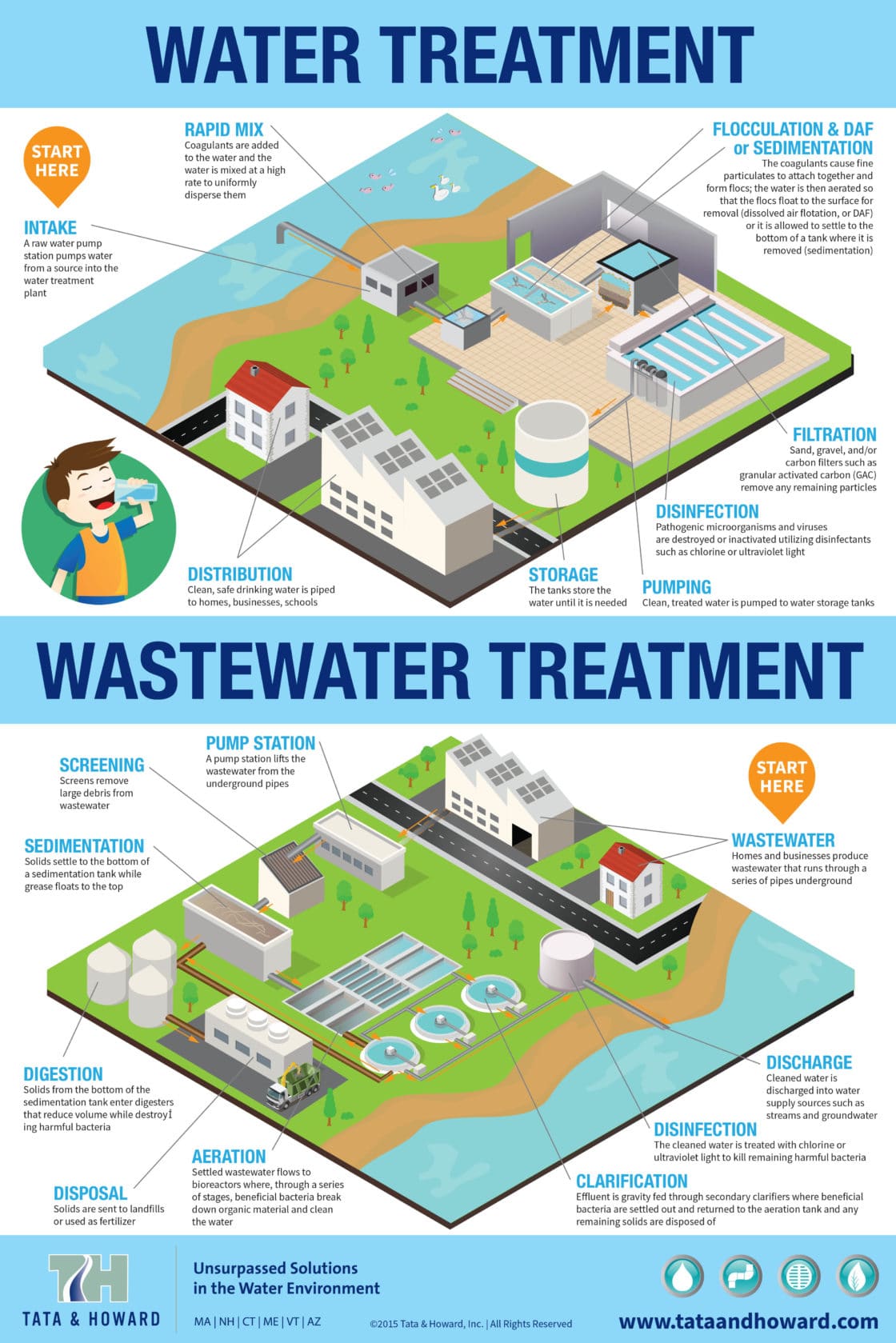Top Guidelines Of Residential Water Treatment System
Table of ContentsGetting The Residential Water Treatment System To WorkSome Known Factual Statements About Residential Water Treatment System How Residential Water Treatment System can Save You Time, Stress, and Money.Some Known Incorrect Statements About Residential Water Treatment System

on the various other hand, comes from production, industrial and commercial activities carried and has a completely various make-up than sewer water. How does it work? The primary step in this water therapy plant is that the wastewater drains pipes to the plant with the assistance of gravity through the primary sewer system.
In this phase, the water relocates through the gravel chamber to remove any type of grit. The gravel is then thrown away at the dump. The water then transfers to bench displays which eliminate large things. These are program displays. Next off, the fine displays eliminate smaller sized items such as undigested foods, or matches, etc.
This is then gotten rid of from the container and disposed of at the dump. Next comes the sedimentation phase, also referred to as the key treatment. In this phase, the water streams to the main settling containers, additionally referred to as pre-settling basins. These storage tanks have hoppers which are located in the base of the container where water flows with.
7 Simple Techniques For Residential Water Treatment System
These clearing up tanks allow the sludge to clear up and after that relocates to food digestion containers. In the digestion storage tanks, the sludge is warmed and also blended. An additional important thing that happens below is the production of biogas, which the wastewater therapy plants can reuse, in the production of electric or thermal energy which is one more massive advantage to the atmosphere.

The last step in wastewater treatment is assessment. This inspection entails inspecting the contamination degree of the water dealt with and also making certain it adheres to the greatest requirements in order to be released or recycled for residential or commercial objectives. residential water treatment system. Applications: Most petroleum refineries or petrochemical along with chemical industries produce a huge amount of wastewater and also need on-site wastewater therapy plants.
The wastewater here moves via displays as well as right into settlement basins that can obtain debris in large quantities. It functions as a pre-treatment as specified above as it happens prior to three more hostile stages- key, secondary as well as tertiary treatment. Key Treatment During this phase, the wastewater moves into the clarifiers.
More About Residential Water Treatment System
It is the layout of these containers that result in working out, that is, the natural solid issue gathers at the visit site bottom of the container while the lighter matter floats to the leading ending up being simpler for removal. The raw material that settles near the bottom is referred to as a key sludge covering.
Additional Treatment This therapy phase includes cardiovascular oygenation. Aeration basins include aerators, these have a system of pipelines or tubes connected to them. They are made from ceramic or rubber membranes that have little openings in them for air to travel through. When this air flows via the aerators, the little openings existing, turn them into bubbles and also they get combined with the water column.
This RAS returns right into the key explanation tank and also the germs in it aids in damaging down any type of organic matter in the sewage. As soon as RAS has actually completely experienced both the primary and second explanation containers continually, i. e a number of times, it is developed into waste-activated sludge (WAS). The WAS then More Help does not return to the key information tank but rather transfers to the protected containers, likewise referred to as cardio sludge digesters.
Ultimately, the continuing to be sludge transfer to the dewatering facility that includes dewatering storage tanks where the plant utilizes belt presses to squeeze any type of staying water out of the sludge. Tertiary Treatment Tertiary therapy adheres to the procedure of both key and also secondary processes however likewise additionally entails mechanical and also photochemical procedures.
The Best Guide To Residential Water Treatment System
The objective of this is to get rid of as much solid physical issues as possible before sending out the effluent for additional therapy. Here chemicals are included to damage down any type of solid and also chemical waste.
There are two kinds of resins- one is an anion one while the various other is a cation one. These previous resins launch hydroxyl ions which are adversely billed while the cation resins release hydrogen ions that are positively charged. The cation-exchange resins bring about softening of water, the anion-exchange outcome in the removal of nitrate from wastewater and the mix of both the anion and cation exchange eliminates basically every ionic contaminant existing in the feed water with a process called deionization (residential water treatment system).
Applications: Demineralization results in the total removal of minerals from the water and is normally used in markets that call for water with high degrees of purity, for instance- makeup or feed water in high-pressure boilers, the food and also beverage sector, and also process streams used in the manufacturing of electronics. They are also made use of in markets for the generation of heavy steam, power and you can check here also air conditioning.
Reverse Osmosis (RO) Water Treatment The principle of reverse osmosis (RO) works on the filtration technique that leads to the removal of a multitude of contaminants as well as contaminations from wastewater by applying stress to it when it gets on one side of a membrane. Exactly how does it function? This water treatment plant works by utilizing a high-pressure pump that enhances the stress on the salt side of the RO and also compels the water throughout the semipermeable RO membrane (which allows some atoms and also particles to pass but not others), leaving nearly 95%-99% of liquified salts in the reject stream.